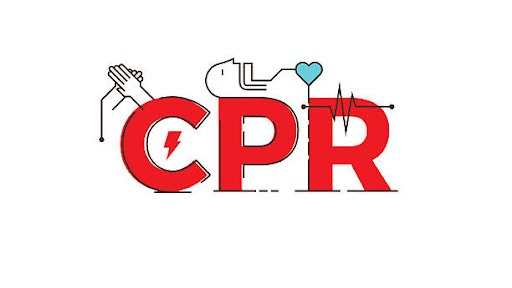
Certify Your Life-Saving Skills: First Aid and CPR
In a world where accidents and emergencies can strike at any moment, having the knowledge and skills to respond effectively can make all the difference between life and death. This is where First Aid and CPR (Cardiopulmonary Resuscitation) certification comes into play. But what is CPR certification exactly, and how long may CPR certification take?
What is CPR Certification?
CPR certification is a vital credential that demonstrates an individual's competence in providing immediate care to someone experiencing a cardiac arrest or other life-threatening situations. It equips individuals with the skills necessary to perform CPR, which involves chest compressions and rescue breaths, in order to maintain blood circulation and oxygenation to vital organs when a person's heart has stopped beating or is beating ineffectively.
CPR certification also includes training in using automated external defibrillators (AEDs) and responding to choking emergencies. In essence, it prepares individuals to be first responders in situations where every second counts.
Why is CPR Certification Important?
CPR certification is crucial for several reasons:
Immediate Response: In emergencies, the first few minutes are critical. Having someone nearby who is CPR-certified can mean the difference between life and death.
Increased Survival Rates: Effective CPR can significantly increase the chances of survival for someone experiencing a cardiac arrest.
Confidence and Preparedness: CPR certification provides individuals with the knowledge and confidence to act swiftly and effectively during emergencies, reducing panic and hesitation.
Workplace Requirement: Many professions, especially those in healthcare, childcare, and certain public service roles, require CPR certification as a prerequisite for employment.
Community Safety: CPR-certified individuals contribute to overall community safety by being ready to assist in emergencies outside the workplace.
Personal Empowerment: Learning CPR empowers individuals to take action and make a positive impact on the lives of others.
How to Get CPR Certified
Now that we understand the significance of CPR certification, let's explore the process of becoming certified. CPR certification can be obtained through various organizations, including the American Heart Association (AHA), the American Red Cross, and private training centers. Here's a general outline of the steps involved:
Choose a Certification Provider: Research and select a reputable certification provider that offers the type of certification you need (e.g., basic CPR, CPR for healthcare professionals, pediatric CPR, first aid certification, etc.).
Select a Training Format: CPR certification can be acquired through in-person classes, blended courses (combining online and in-person components), or fully online courses. The choice of format depends on your schedule and preferences.
Enroll in the Course: Enroll in the CPR certification course of your choice. If you opt for an online course, you'll typically need to create an account on the provider's website.
Complete the Training: Engage in the training program, which includes instructional videos, written materials, and interactive simulations. Learn the proper techniques for CPR, AED use, and responding to choking incidents.
Pass the Evaluation: Most CPR certification courses require participants to pass a skills evaluation, which may involve demonstrating CPR on a manikin and correctly using an AED. Online courses often include a hands-on component, either in-person or through a virtual platform.
Receive Your Certification: Upon successful completion of the course and evaluation, you will receive your CPR certification card or certificate. This document proves your competency in life-saving skills and is typically valid for two years.
How Long Does Online CPR Certification Take?
Now that we've covered the basics of CPR certification, let's address the question: How long does online CPR certification take? The duration of online CPR certification courses can vary depending on the specific course and provider you choose. Here are some general guidelines:
Basic CPR Certification: A basic CPR certification course, designed for the general public, can often be completed in 1 to 2 hours online. This includes instructional videos, reading materials, and a final assessment.
CPR for Healthcare Providers: Healthcare provider CPR courses are more comprehensive and may take around 2 to 4 hours to complete online. These courses are tailored to the needs of healthcare professionals and may include additional topics and skills.
Blended Courses: Some online CPR certification programs offer blended courses that combine online learning with an in-person skills check. These courses typically require participants to complete the online portion first, which may take a few hours, and then schedule a brief in-person session (usually 1-2 hours) to demonstrate their skills.
Advanced CPR Certifications: Advanced certifications, such as Pediatric Advanced Life Support (PALS) or Advanced Cardiac Life Support (ACLS), require more extensive training and may take several hours to complete online, in addition to hands-on skills assessments.
It's important to note that the exact duration can vary based on your learning pace and familiarity with the material. Online CPR certification courses are designed to be flexible, allowing individuals to complete them at their own pace, and they often offer the convenience of 24/7 access to course materials.
In conclusion, CPR certification is a valuable credential that equips individuals with the skills needed to save lives in emergency situations. The time it takes to become certified online can vary depending on the type of certification and your prior knowledge, but most basic courses can be completed in just a few hours. Ultimately, the investment in CPR certification is an investment in your ability to make a difference when it matters most—during critical moments when a life hangs in the balance. So, if you haven't already, consider taking the steps to certify your life-saving skills in CPR today.

Comments (0)